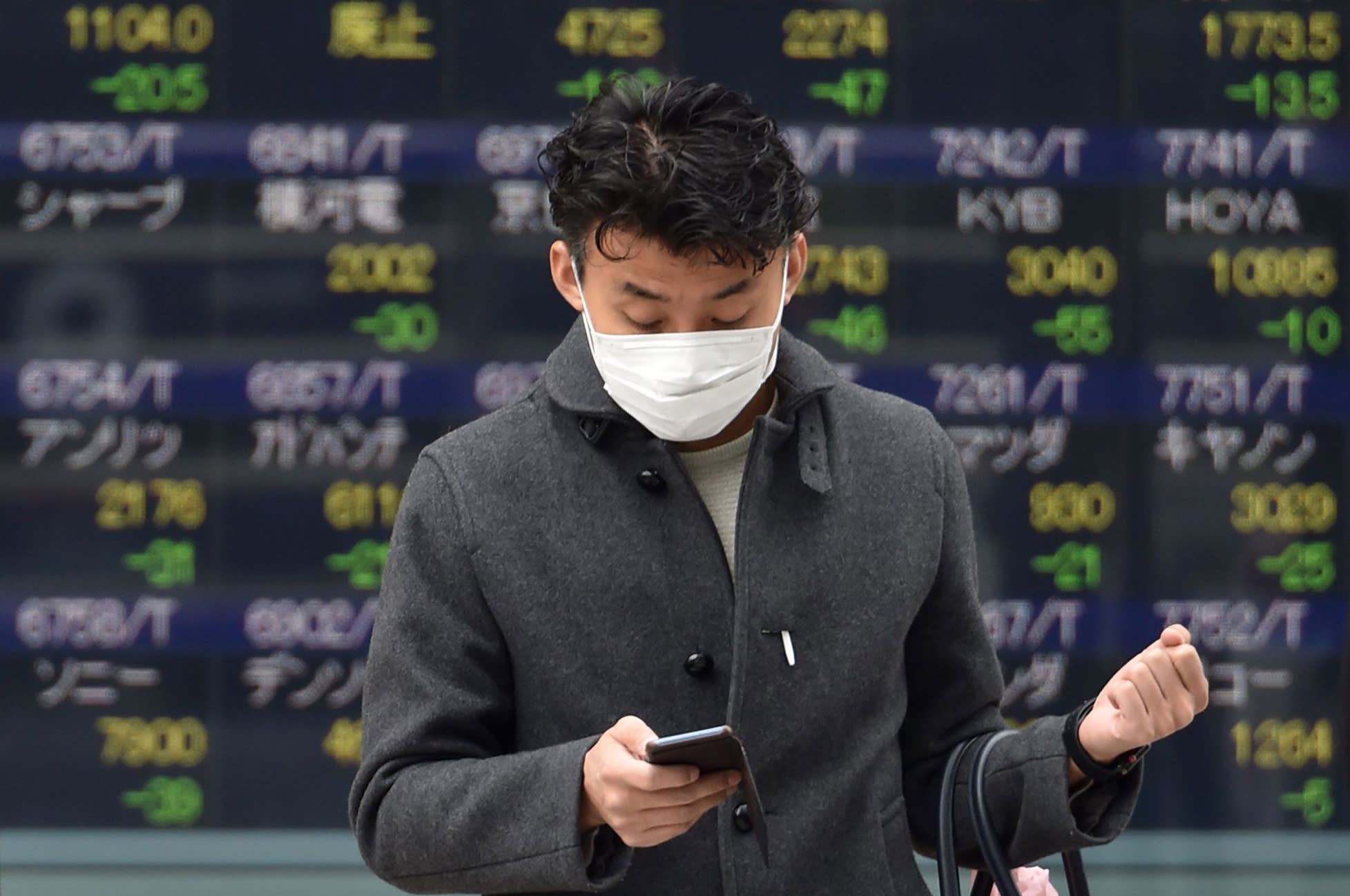
Stocks in mainland China plummeted more than 7% on Monday morning as they returned to trade following an extended holiday amid an ongoing coronavirus outbreak.
The Shanghai composite fell 7.31% while the Shenzhen component dropped 7.48%. The Shenzhen composite also declined 7.749%. The indexes all fell almost 9% in early trade.
The moves on the mainland came following an extended holiday amid an ongoing virus outbreak that has taken more than 300 lives in the country so far.
The People’s Bank of China announced Sunday that it will inject 1.2 trillion yuan (approx. $173 billion) worth of liquidity into the markets via open market reverse repo operations. The Chinese central bank said the overall liquidity in the system would be 900 billion yuan (approx. $130 billion) more as compared to the same period last year.
“While this will be the largest single-day addition since 2004, it implies a mere net injection of RMB150bn as commercial banks are scheduled to repay RMB1.05tn of funds on Monday,” strategists at Singapore’s DBS Group Research wrote in a note. “The authority may need to inject more cash in the rest of the week via reverse repo and/or medium-term lending facility to soothe market nerves.”
Meanwhile, Hong Kong’s Hang Seng index rose 0.59% as shares of Chinese tech juggernauts Tencent and Alibaba jumped 2.09% and 1.7%, respectively.
In Japan, the Nikkei 225 fell 0.92%. The Topix index also declined 0.7%. South Korea’s Kospi shed 0.23%.
Meanwhile, shares in Australia tumbled as well, with the S&P/ASX 200 dropping 1.25%.
Overall, the MSCI Asia ex-Japan index traded 0.59% lower.
A private survey of China’s manufacturing activity also came in on Monday, showing it expanded in January, with the Markit/Caixin manufacturing Purchasing Managers’ Index (PMI) for January at 51.1. That was below expectations of 51.3 by economists in a Reuters poll. The PMI figure for December was 51.5. PMI readings above 50 indicate expansion, while those below that level signal contraction.
On Friday, China’s National Bureau of Statistics said the country’s official manufacturing PMI came in at 50.0 for the month of January — an indication of stalled activity. The bureau said that the impact of the ongoing coronavirus outbreak was not fully reflected in the survey, which was conducted before Jan. 20.
Investors have been closely tracking the coronavirus outbreak in recent days. Stocks on Wall Street plunged on Friday amid concerns over the virus’ potential economic impact, with the Dow Jones Industrial Average’s gains for January being wiped out as it plummeted about 600 points.
Currencies and oil
The U.S. dollar index, which tracks the greenback against a basket of its peers, was at 97.459 after declining from levels above 97.8 last week.
The Japanese yen, often viewed as a safe-haven currency in times of economic uncertainty, traded at 108.53 per dollar after strengthening sharply from levels above 108.9 last week. The Australian dollar changed hands at $0.6699 after slipping from levels above $0.676 in the previous trading week.
The onshore Chinese yuan traded at 6.9979 against the greenback while its offshore counterpart was at 6.9944 per dollar.
Oil prices slipped in the morning of Asian trading hours, with international benchmark Brent crude futures declining 0.58% to $56.29 per barrel. U.S. crude futures also shed 0.25% to $51.43 per barrel.
— CNBC’s Huileng Tan contributed to this report.
